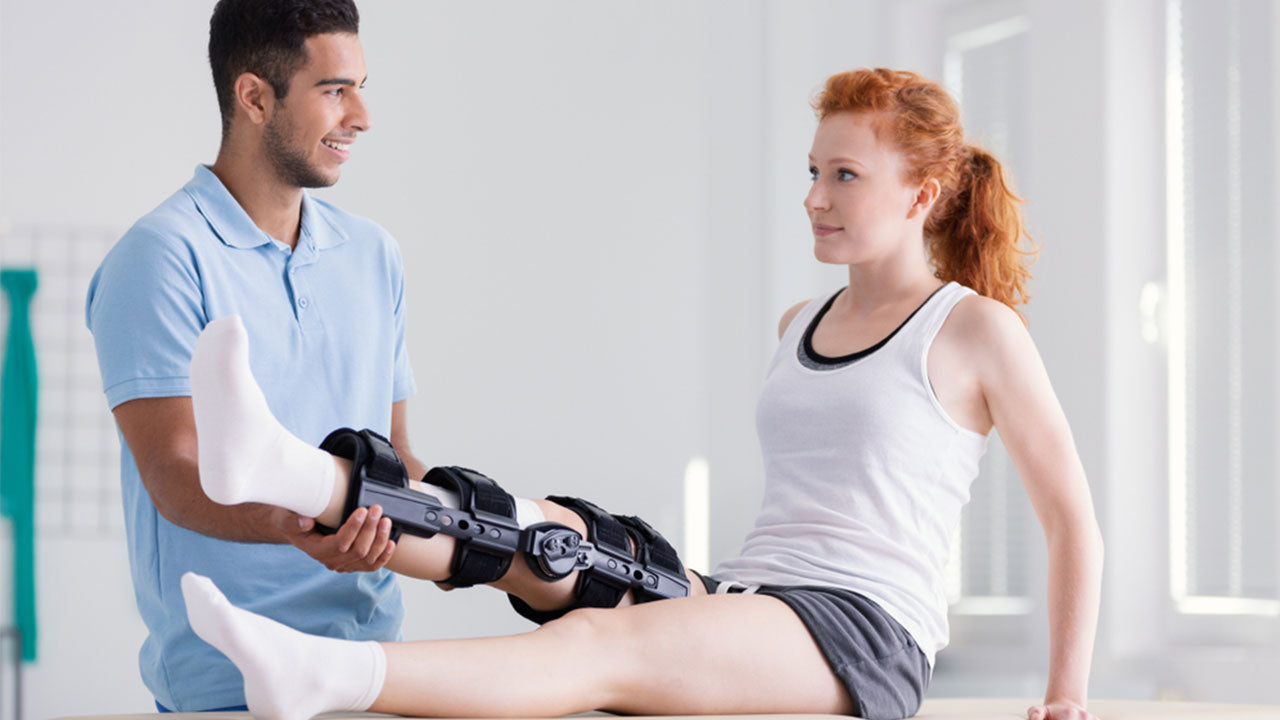How to Speed up MCL Surgery Recovery: Top 5 Tips
 By: by Amino Science
By: by Amino Science

Your medial collateral ligament (MCL) is one of four major ligaments that hold your knee joint together. An MCL tear can sometimes be so severe that it requires surgery to repair or replace. If you or a loved one has recently suffered an MCL injury, you're probably looking for answers. This article reviews the probable causes of MCL tears, what happens during a repair procedure, and what you can do to help accelerate MCL surgery recovery.
What Is the MCL?
The medial collateral ligament is one of the four stabilizing ligaments in the knee. Ligaments connect bone to bone (whereas tendons connect bone to muscle), and an injury to any one of them can compromise your range of motion, not to mention your quality of life. The knee's tendons include the following.
- Anterior cruciate ligament (ACL): The ACL is the most commonly injured ligament. It crosses diagonally between the femur (thigh bone) and tibia (shin bone), providing stability during side-to-side knee rotations.
- Posterior cruciate ligament (PCL): Your PCL also connects the shin to the thigh bone, but it is positioned at the back of the knee, allowing it more protection from injury.
- Lateral collateral ligament (LCL): The LCL connects thigh to shin bone and is positioned on the outside of the knee joint.
- Medial collateral ligament (MCL): The MCL is the tissue band that runs on the inner side of the knee, connecting your shin and thigh bone.
These ligaments each help stabilize the complicated, weight-bearing joint that is the knee, and a tear to any one of them can cause pain and disability.
Common Causes of MCL Injury
MCL sprains and tears are ligament injuries that are often caused by direct blows to the knee. Because it's located on the inner side of the knee and leg, the MCL is otherwise protected. (If you touch your knees together, your MCLs are side by side.) It's a safer position than that of the LCL, which is on the outer side of the knee, but each of these ligaments are vulnerable during contact sports like football or hockey, where impact with another player can force the knee out of alignment, straining or tearing the ligaments that hold your leg bones together.
Types of MCL Tears
MCL injuries are graded based on their severity.
- Grade I: This is the least severe injury, when the ligament is overly stretched but not torn.
- Grade II: A partial tear of the MCL is a grade II injury, which may not need surgery, only proper care during the recovery period.
- Grade III: The most severe MCL injury is a complete tear, which can cause great pain and joint instability. Surgery may be required to fix grade III injuries.
MCL Injury Symptoms and Non-Surgical Treatment Options
You may know an MCL injury by the following symptoms.
- Tenderness or pain along your inner knee
- A popping sound during the injury
- Knee joint swelling
- A giving or locking sensation in the knee
A doctor may perform a physical examination or order X-rays or MRI scans to confirm the injury, assess its severity, and rule out other causes of knee pain such as bone injury.
Treatment options for knee injuries are determined on a case-by-case basis and through consultation with your doctor, but common non-surgical treatments include:
- Resting the knee to allow time for healing
- Icing the injury to reduce inflammation
- Compressing the knee in a bandage or knee brace
- Elevating the joint higher than your heart to reduce swelling
- Taking NSAIDs (nonsteroidal anti-inflammatory drugs) to ease swelling and pain
- Utilizing crutches to aid mobility while your injured knee heals
- Attending physical therapy rehab to help strengthen the muscles surrounding the knee
Surgery may be necessary in extreme cases.
Surgical Solutions to MCL Tears
Luckily MCL tears rarely require surgery, but sometimes the ligament is so thoroughly torn that it is not in a position to heal itself. If your doctor recommends surgery, the procedure will mostly likely be eligible for a minimally invasive arthroscopic repair (using a tiny camera inserted through a small incision), allowing for faster recovery times.
Refastening the MCL to the bone may involve stitches, bone staples, metal screws, or a suture anchor depending on the position of your tear and the health of the tissue at the time of surgery. A mid-ligament tear on the other hand may simply be stitched together by your surgeon.

MCL Surgery Recovery: The Top 5 Tips to Speed Healing
While ACL reconstruction is one of the most involved procedures in sports medicine, requiring the harvesting of tendons from other areas in the leg (like the hamstrings or quadriceps) and reattaching them inside of the knee, MCL procedures can heal in a matter of weeks or even days. Here are five basic tips to help accelerate MCL surgery recovery time.
1. Follow All Medical Advice
While it's true that no one knows your body or your pain thresholds as well as you do, your doctor nevertheless has the wisdom collected from years of experience and can help you avoid complications like infection or poor healing. This tip includes obvious steps like attending all follow-up appointments (or rescheduling them if you can't make it that day), and taking all medications—including pain meds—as directed and to completion.
This is because pain meds are another form of crutch prescribed to help you heal faster: the less pain you feel as you get active again or while you attend physical therapy rehab, the more likely you are to regain your full range of motion.
2. Use Heat and Ice Therapy
Don't use an ice pack and a heating pad at the same time of course, but icing your knee after surgery can help reduce swelling and pain, while heat therapy can ease stiffness, relax muscles, and increase circulation to the area as you heal. You'll know which therapy feels right when the time comes, but if you want specific medical advice for an optimal recovery, never hesitate to ask your doctor or another qualified health care professional.
3. Don't Rush Recovery
Because injury to the inner part of the knee is commonly due to sporting, those recovering from MCL surgeries are often active people. It can drive you nuts to be house-bound after an MCL procedure, but in the long run it is so much better to keep off your knee as much as possible for as long as your doctor recommends.
Think about it: if you're antsy to get back out there now, imagine how infuriating it would be to reinjure your knee due to prematurely returning to vigorous activity, and then to have to endure the recovery process again. Take up knitting if you have to, download some games onto your phone if you must, but be sure to rest as long as recommended by your doctor or physical therapist.
4. Rest Well with Proper Sleep
If you're not used to sitting around recovering all day, it might be tempting to nap your way through knee surgery recovery. While naps are not discouraged (and some attribute napping to the success of great thinkers like Thomas Edison, Albert Einstein, and Winston Churchill), getting proper sleep involves going to bed at the same time each night.
Tips for being able to fall asleep on time each night include having a regular pre-sleep routine, and going to bed in a cool, dark, and quiet room.
5. Feed Your Recovery
One of the best ways to speed up recovery is to make sure your body has everything it needs to rebuild, and that mean adequate protein input and, on the cellular level, sufficient amino acid supplies. Evidence has shown that supplementing with amino acids after just about any surgery can help speed recovery times because it gives your body the building blocks required to create new muscle tissue and replace weak or damaged cells with new and better ones.
Ask your doctor if he or she recommends certain foods for a recovery diet, and be sure to stock up on a high-quality amino acid powder for extra MCL recovery support. We recommend Heal, clinically proven to reduce recovery times and improve physical function after surgery and injuries by accelerating muscle repair while helping to maintain a healthy inflammatory response.
Getting Well with Your MCL
Medial collateral ligament injuries thankfully heal very well, and you can help that healing process along with these tips. With a speedy recovery, you'll be back on your feet in no time!

Up to 25% off Amino
Shop NowTAGS: surgery
Join the Community
Comments (0)
Most Craveable Recipes




 833-264-6620
833-264-6620



















